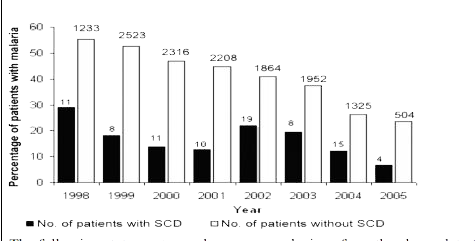Which one of the following set is correctly matched ?
I. Diptheria, pneumonia and leprosy: Hereditary
II. AIDS, syphilis and gonorrhiea : Bacteria
III. Colour blindness, haemophilia : Sex linked and sickle cell anemia
IV. Polio, Japanese B encephalitis and : Viral & plague
only II
only III
I & IV
None of these
The correct Answer is:D
Similar Questions
Which one of the following pairs is correctly matched?
(i)Vitamin B12(a)Anaemia(ii)VitaminA(b)Night blindness(iii)VitaminC(c)Scurvy(iv)VitaminE(d)sterilityView SolutionWhich of the following is/are not correctly matched pairs?
(i) Ball and socket joint- (a)Between humerus and pectoral girdle
(ii) Pivot joint - (b)Between carpal and metacarpal
(iii) Saddle joint - (c)Between atlas and axis
(iv) Gliding joint - (d)Between the carpals
(v) Fibrous joint - (e)In flat skull bonesView Solution
Knowledge Check
- Question 1 - Select One
Which of the following statements are correct for innate immunity?
(I). Bacteria enter through a break in the skin.
(II). Resident phagocytic cells engulf the bacteria
(III). B-cells are stimulated to produce specific antibodies.
(IV). Diapedesis allows new phagocytic leukocytes to invade the infected area.
CodesAIII and IVBI and IICI and IIIDII and IV - Question 2 - Select One
Which one of the following pairs is correctly matched?
(i)Vitamin B12(a)Anaemia(ii)VitaminA(b)Night blindness(iii)VitaminC(c)Scurvy(iv)VitaminE(d)sterilityA(i) - a , (ii) - b (iii) - c (iv) - dB(i) - b (ii) - c (iii) - d (iv) - aC(i) - d , (ii) - c (iii) - a (iv) - bDNone of these - Question 3 - Select One
Which of the following statements is correct-
I. Mycoplasma has no cell wall
II. Mycoplasma is the smallest living organism
III. Mycoplasma cannot survive without O2
IV. Mycoplasma are pathogenic in animals and plants
V. True sexuality is not found in bacteria
VI. A sort of sexual reproduction by adopting a primitive DNA transfer from one bacterium to the other occursAI,II,VBOnly IIICI, II, IV, V, VIDAll
Select the chromosomal disorders from the following diseases affecting humans
I. Haemophilia
II. Down's syndrome
III. Klinefelter's syndrome
IV. Sickle cell anemia
V. Turner's syndrome
VI. ThalessemiaView SolutionGo through the following statements:
I. Viruses are more closely related to chemical matter than to a living organism.
II. Viruses and bacteria are the only infectious agents found in plants and animals
III. All viruses are obligate parasites of cells, the majority do not cause disease.
IV. Viruses cannot be observed using a light microscope
Which one is correct option?View SolutionPick out the correct statements.
I. Haemophilia is a sex-linked recessive disease.
II.Down's syndrome is due to aneuploidy.
III. Phenylketonuria is an autosomal recessive gene disorder.
IV. Sickle-cell anaemia is an X - linked recessive gene disorder.View SolutionConsider the following humans genetic disorders due to recessive genes on autosomal chromosomes and choose which ones are
(I) Sickle-cell anaemia
(II) Phenylketonuria
(III) Haemophilia
(IV) TuberculosisView SolutionSickle cell anemia is a genetic disorder where the body produces an abnormal hemoglobin called hemoglobin S. Red blood cells are normally flexible and round, but when the hemoglobin is defective, blood cells take on a “sickle” or crescent shape. Sickle cell anemia is caused by mutations in a gene called HBB. It is an inherited blood disorder that occurs if both the maternal and paternal copies of the HBB gene are defective. In other words, if an individual receives just one copy of the defective HBB gene, either from mother or father, then the individual has no sickle cell anemia but has what is called “sickle cell trait”. People with sickle cell trait usually do not have any symptoms or problems but they can pass the mutated gene onto their children. There are three inheritance scenarios that can lead to a child having sickle cell anemia:
- Both parents have sickle cell trait
- One parent has sickle cell anemia and the other has sickle cell trait
- Both parents have sickle cell anemia

The following statements are drawn as conclusions from the above data (Kenya).
I. Patients with SCD (Sickle Cell Disease) are less likely to be infected with malaria.
II. Patients with SCD (Sickle Cell Disease) are more likely to be infected with malaria.
III. Over the years the percentage of people infected with malaria has been decreasing.
IV. Year 2000 saw the largest percentage difference between malaria patients with and without SCD.
Choose from below the correct alternative.View Solution

